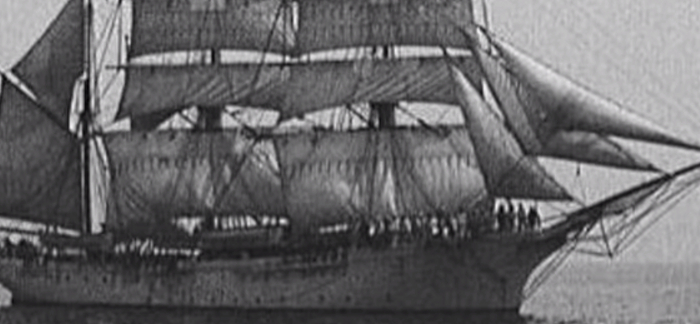During the colonial era in Europe, the word “hero” was often used to describe the explorers that found new lands for the crown. Sir Francis Drake was one of those explorers and many people thought of him as that hero. Considering Drake received his knighthood from Queen Elizabeth on board his own boat, the feelings of admiration ran all the way up the chain of command. Maybe it had to do with all the gold and silver he found.
1. You Never Expect the Spanish Armada
Drake was one of the most influential members of the Royal Navy, even if he wasn’t always enlisted for military service. When the Spanish Armada was thought to be headed toward England, Drake set a course for Spain so he could do something about it. In the end, he managed to capture 6 warships for the crown and sunk another 31 Spanish ships over the process. He also looted silk, spices, and gold for three great gifts to give Queen Elizabeth. When the Armada came along in 1588, Drake was one of the commanders of the fleet that defeated the invasion.
2. That Pesky Mutiny Thing
In 1577, the reputation that Drake had built as an explorer earned him a commission from Queen Elizabeth to set sail across the Atlantic Ocean. What Drake decided to do, however, was find a way to sail around the world. It took him 3 years to make that happen, but eventually he returned home to great acclaim. Never mind that he had a mutiny and lost all of his ships but one of them. Bringing home gold and land claims is proven to solve all ill feelings.
3. He Funded His Own Adventure
So rich was Drake that one of his earlier voyages in the 1570s was self-funded. He took his ship to the Caribbean and sailed along the coasts of Panama. So good was his plundering from the adventure that he had to leave some of the loot behind because his ship couldn’t carry it back home. Drake left it in a hidden bay, but 2 years later when he came back to get it, his treasure map led him to an empty treasure house and a waiting Spanish army.
4. A Bad Reputation
On one of Drake’s first voyages, he worked for another explorer named John Hawkins. Drake captained one of the vessels under the overall command of Hawkins. It had been decided that the English fleet should go after a Spanish settlement and plunder their riches. Before they could reach the settlement, however, the local Spanish fleet attacked the English with great ferocity. It created mass confusion. Drake looked around, didn’t see any other English ships, and decided that going home seemed like a great idea.
Except he wasn’t the last ship. John Hawkins also survived the battle and made his own way back to England, where he would accuse Drake of desertion. Nothing came of the charge, Hawkins eventually forgave him, but Drake would never work for anyone in the Hawkins family ever again.
5. Tasty Plunder
Drake got his love for the sea at an early age. At one point, his family even lived on a boat full time in the Medway River. By the age of 10, Drake was working for a pilot who sailed along the coast of England, catching fish, guiding ships, and sailing down to France to trade [or plunder] cheese, brandy, and wine. Eventually this stuff got old because Drake wanted to experience the open sea instead of the English Channel.
6. Come Back Hawkins!
John Hawkins might not have had Drake ever work for him again, but Hawkins would work for Drake on the last fateful voyage that would be commissioned by Queen Elizabeth. The year was 1595 and 6 years had passed since a terrible privateering episode went wrong when Drake attacked Spanish ships and lost badly. Drake and Hawkins went to the Caribbean in search of settlements and treasure, but people got sick. Hawkins died of fever soon after departing and Drake would as well as soon as he captured a couple settlements.
7. Now That’s a Bounty
The English might have loved the exploits of Sir Francis Drake, but the Spaniards hated the man with a passion. There was most certainly cheering happening in the streets of Spain when it was learned that a fever had claimed the man’s life. King Philip II of Spain at one point even offered a reward that in today’s money would equal about $6.5 million in order to capture Drake dead or alive.
Why was he so hated? Because Drake was more of a pirate than a soldier. When there was a battle at hand, Drake would go plunder possessions while other ships engaged in battle.
8. North to America
Drake was one of the first explorers of the colonial era to reach up into what would be the Pacific Northwest in the United States. He claimed California on behalf of England during his trip around the world and Drake’s Bay is considered to be the official location of where he planted his flag. According to Drake’s log of descriptions, however, it is believed that he went all the way up to the Oregon Dunes before deciding to cross the Pacific on his way home.
Some people even believe that Drake made it all the way up to British Columbia. Numerous mountains in the Canadian province have been named after the global expedition, including the highest mountain on Vancouver Island being named Golden Hinde after the last surviving ship that made the global voyage.
9. A Surviving Token
Many of the jewels and tokens of note from the colonial era have either gone missing or dropped into private collections that no one really talks about. One of the great exceptions to this is the Drake Jewel, which Queen Elizabeth gave Sir Francis Drake after his around the world journey was completed. As a commoner, the gift was unusual enough in itself. The fact that it held an official portrait of the queen and a cameo of a dual portrait on the reverse make it even more unusual. You can see this gift today at the Victoria and Albert Museum.
10. Controversy
Drake is very much suspected to have been an influential slave trader with the Hawkins family when he wasn’t out exploring. Drake was also at the Rathlin Island Massacre where 600 people, including children, were killed after a surrender was accepted. Drake’s job was to make sure no reinforcements reached the island. Once taken, however, Drake didn’t stay to defend the island because no one paid him to do so.
Some love Sir Francis Drake. Others think of him in a not-so-friendly light. These fun facts about the man show why he has become one of the leading figures of adventure during the European colonial era.




